Art
Biennale Presents Issue-based Themes
Painting created by the students of Textile Institute of Pakistan
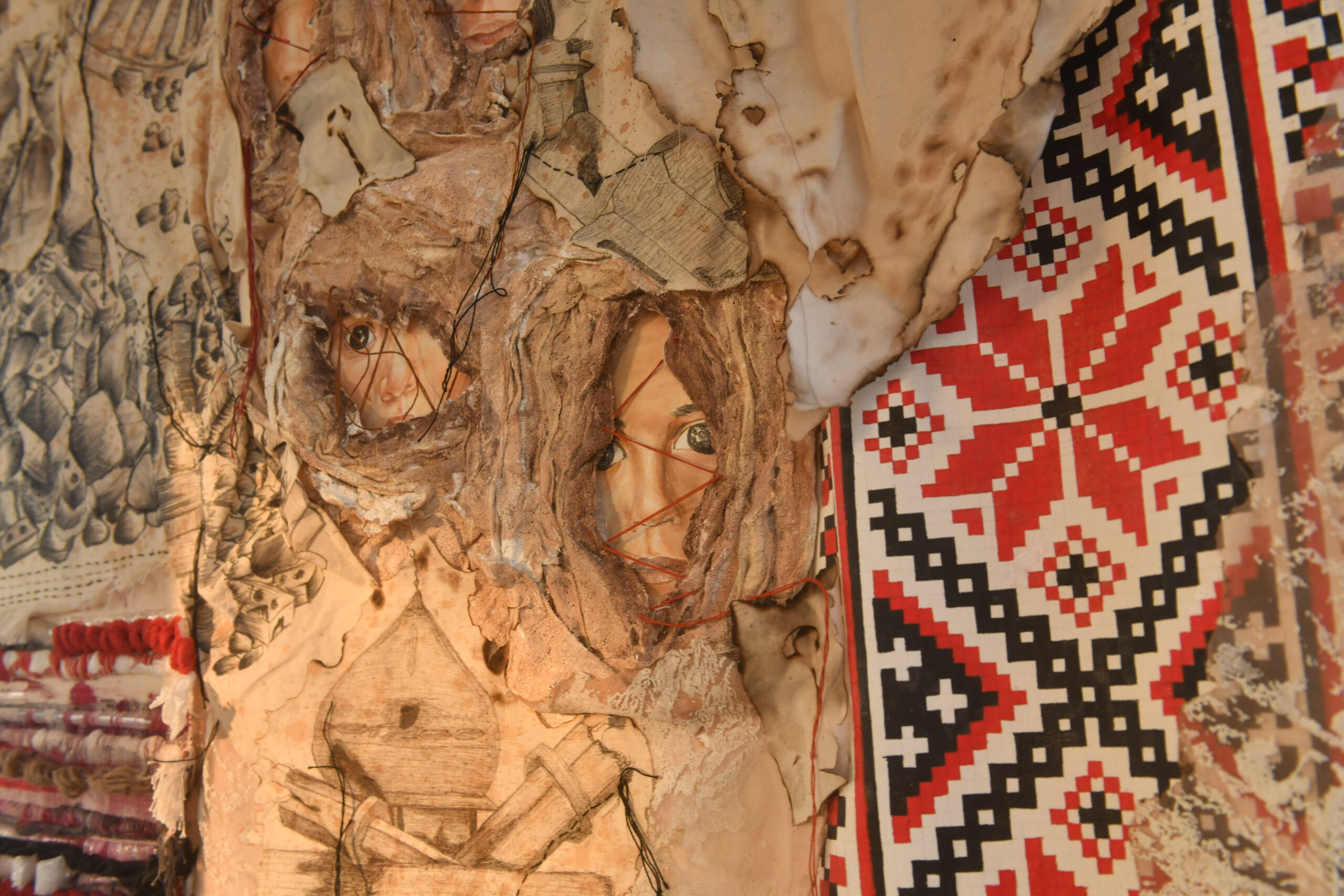
By Ahwar Nasir
The Karachi Biennale, Pakistan’s largest contemporary art platform, returned this year with its fourth edition, transforming Karachi into a hub of artistic dialogue and engagement. The Karachi Biennale Trust has been instrumental in revitalizing public art spaces across the city, creating an expansive platform that unites artists from across Pakistan and the world.
Since its inception, Karachi Biennale has grown remarkably, holding three successful events from 2017 to 2024, each one further reinforcing Karachi’s position on the international art stage. Supported by local and global art communities, the corporate sector, and various cultural and educational institutions, Karachi Biennale brings contemporary art into the public sphere, inviting audiences to experience immersive installations and thought-provoking art.
The theme of KB24, “Rizq | Risk”, delved into the complex intersections of food security, environmental sustainability, social justice, and cultural heritage. Curated by Waheeda Baloch, the theme aimed to spark critical conversations around how global food systems are affected by colonialism, globalization and climate change, and how these impacts ripple across local communities and traditional practices.
Waheeda Baloch, deeply affected by her work with communities displaced by the 2022 floods, shared her vision for this edition, describing how art can be a medium for highlighting forgotten narratives and championing indigenous practices.
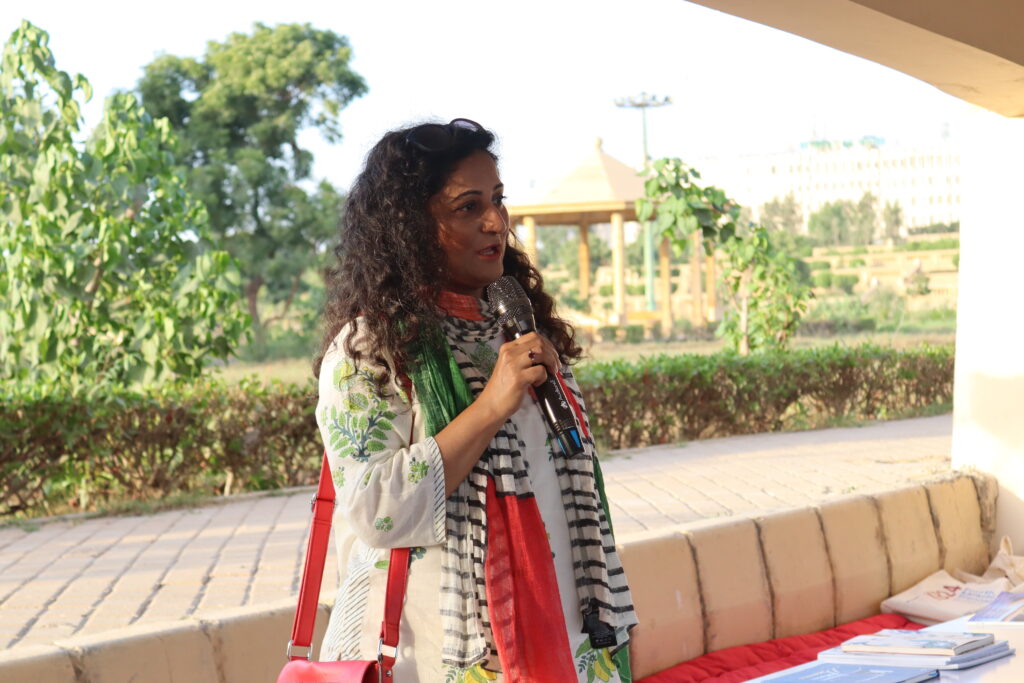
The Biennale’s inauguration took place at the historic Bandstand in Bagh Ibn-e-Qasim, its century-old structure illuminated to showcase its architectural beauty and legacy. This simple yet enchanting ceremony was attended by distinguished guests, including Mayor Murtaza Wahab,
who spoke of his commitment to revitalizing heritage sites like Frere Hall and the Bandstand with cultural events for Karachi’s citizens.
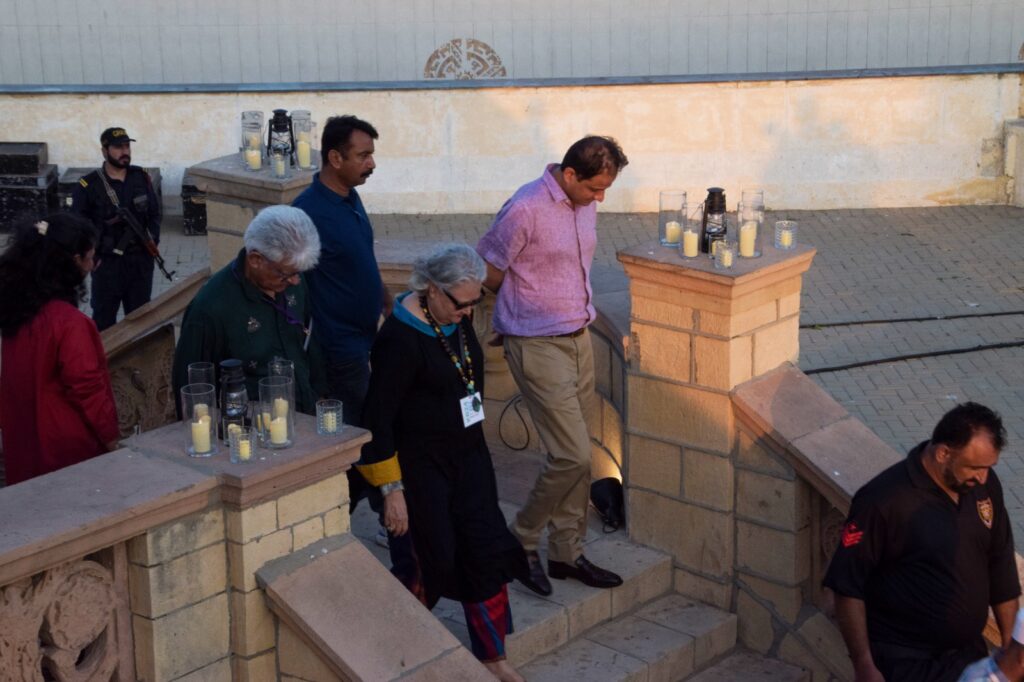
Murtaza Wahab being escorted by Niilofur Farrukh and Almas Bana
Managing Trustee of the Karachi Biennale Trust, Niilofur Farrukh, emphasized the Biennale’s mission to make contemporary art accessible by integrating it within heritage spaces, allowing the public to engage with these environments and form collective memories. At the opening, the KB24 Juried Art Prize was awarded to Nadeem Al Karimi and Maham Nadeem, a duo from Hunza, for their impactful work “The Last Act” and “Dismantling Life”, which poignantly addresses the loss of natural habitats in Hunza due to urbanization. Their installation, situated at Bagh Ibn-e-Qasim, uses discarded food wrappers to highlight the environmental effects of tourism and urban development.

The artists duo, Nadeem AlKarimi and Maham Nadeem received the Juried Art Prize
The KB24 EBM Emerging Artist Prize was awarded to Anusha Khwaja from Lahore, whose work emphasizes the vital link between women and food production, honoring women as both growers and nurturers.
KB24 brought together 40 artists from 10 countries, who explored the theme “Rizq | Risk” through installations, performances, videos, and paintings at multiple venues, including Bagh Ibn-e-Qasim, Alliance Française, Frere Hall, NED University, and Sambara Art Gallery. From interactive installations to thought-provoking video art, the works reflected on the impacts of recent floods and heatwaves on Pakistan’s food security. Artists raised questions about colonial and neoliberal policies that prioritize profit over ecological balance and presented indigenous knowledge as a pathway to healing the environment.
A particularly moving part of the Biennale was the exhibit “Artists of Gaza live in our hearts”, a collection of tapestries created by art students across universities in Pakistan, installed at Bagh Ibn-e-Qasim. This tribute honoured the resilience of Gaza’s artists and highlighted the universal role of art in capturing and preserving the human spirit.
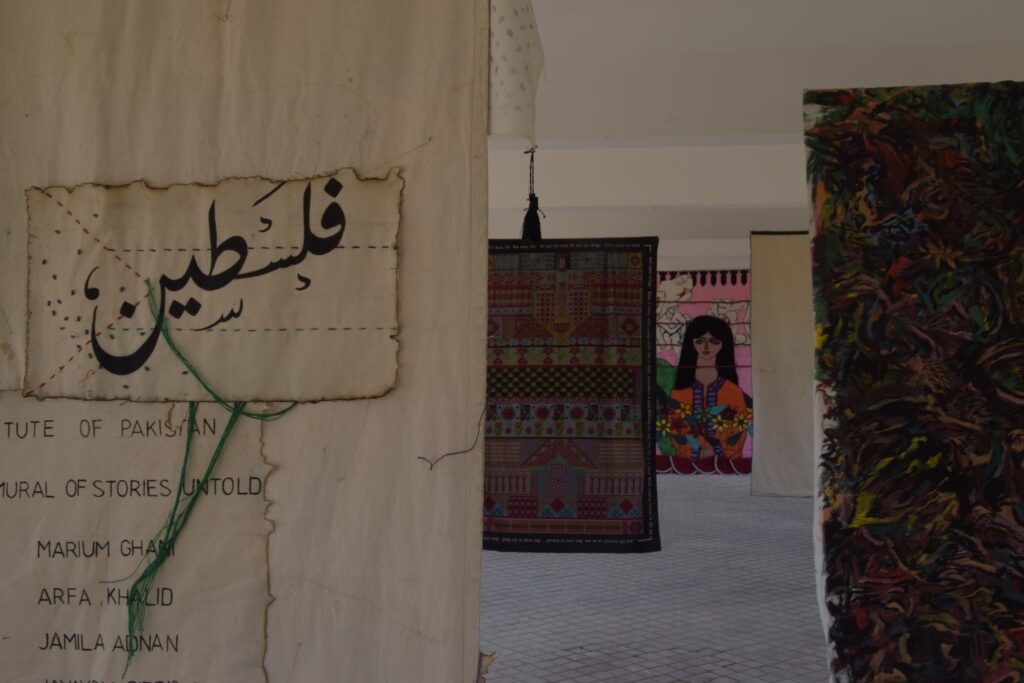
In addition to the art exhibits, KB24 featured an extensive public programme with artist talks, keynote discussions, workshops, and guided tours. At the reading room in Bagh Ibn-e-Qasim, visitors could gather and immerse themselves in books and literature connected to the Biennale’s themes, enriching their experience of the art.
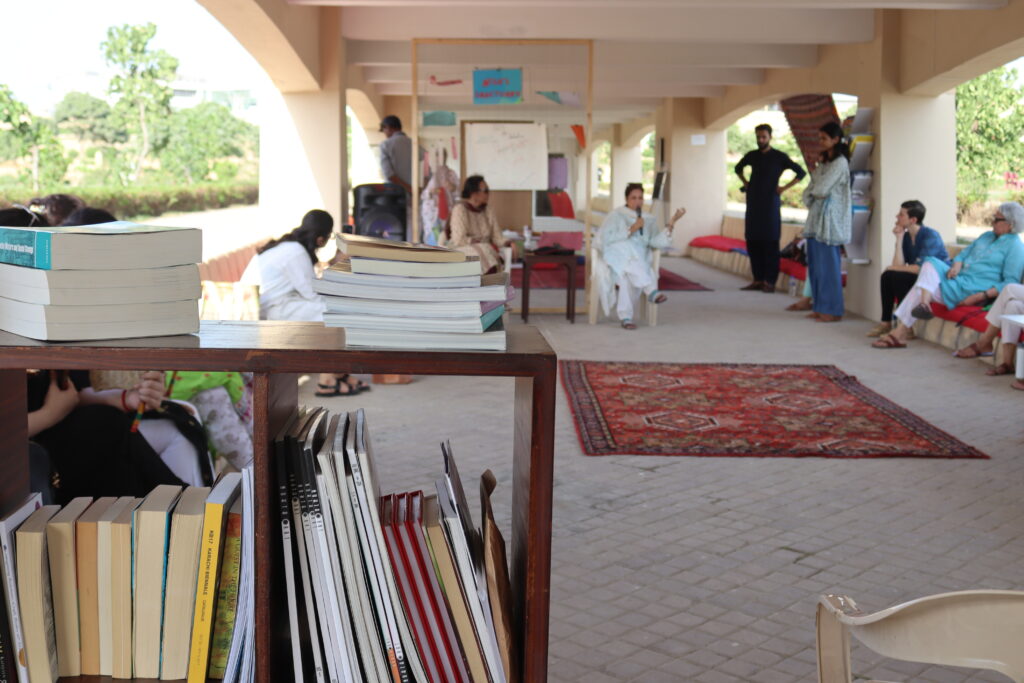
Reading Room at Bagh ibn-e-Qasim.
Among the standout installations and performances at KB24, several artworks left an indelible mark with their powerful messages and intricate artistic approaches.
Sadqain (Pakistan) presented “Water Spill and Nala” at NED University, using concrete, plaster, and pigments to evoke the relationship between water and pollution. This Lahore-based artist invited the audience to consider how water holds memories and traces of land, symbolizing both purity and contamination. With dye dispersing over slabs, his work showed how pollution often remains unseen yet ever-present.
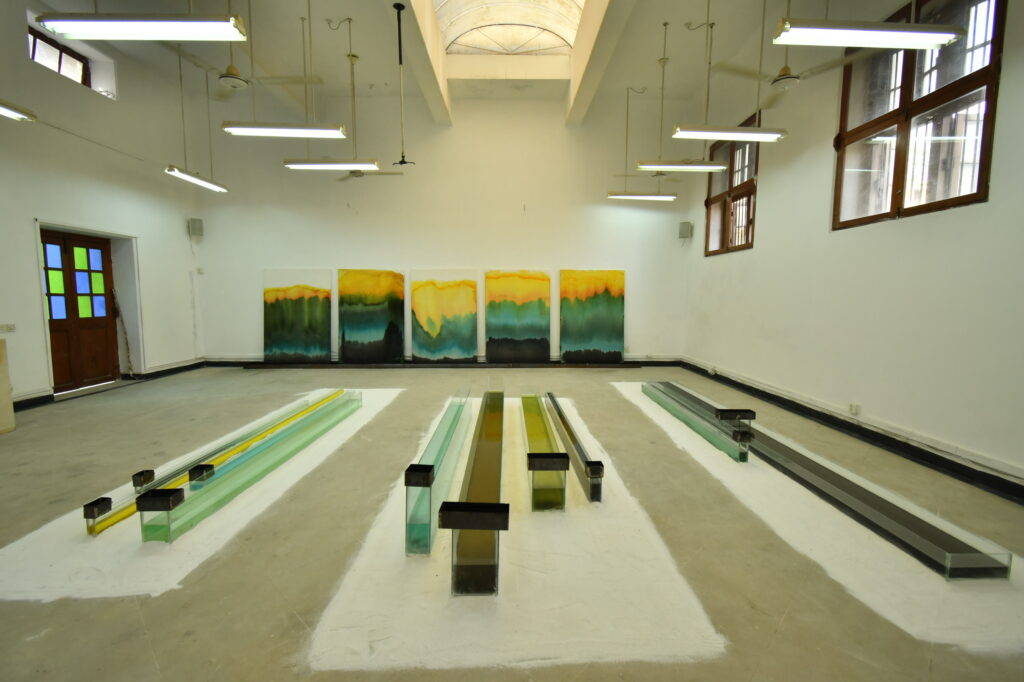
Sadeqain’s artwork displayed at NED University (city campus)
Christer Lundahl and Martina Seitl (Sweden) showcased “River Biographies / That Which Is Not You but of Which You are a Part”, a sensory performance that blurred boundaries between human and natural elements. Visitors wearing sightless goggles were led by others, immersing themselves in the experience of being like water or stone. This interaction emphasized trust, interdependence, and the fluid connection between people and the natural world.
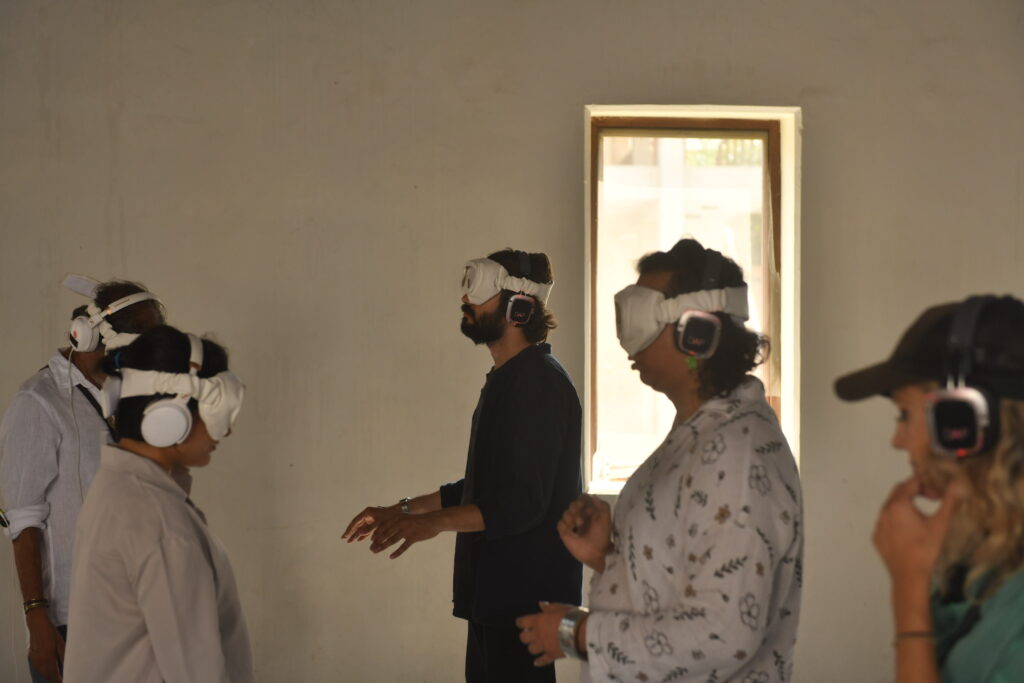
Public interaction with Lundahl and Seitl’s performance.
Salim Bayri and Ghita Skali (Morocco/Netherlands) contributed the “Sunflower Seed Project”, a participatory piece encouraging visitors to consume sunflower seeds while reflecting on food security and monoculture.
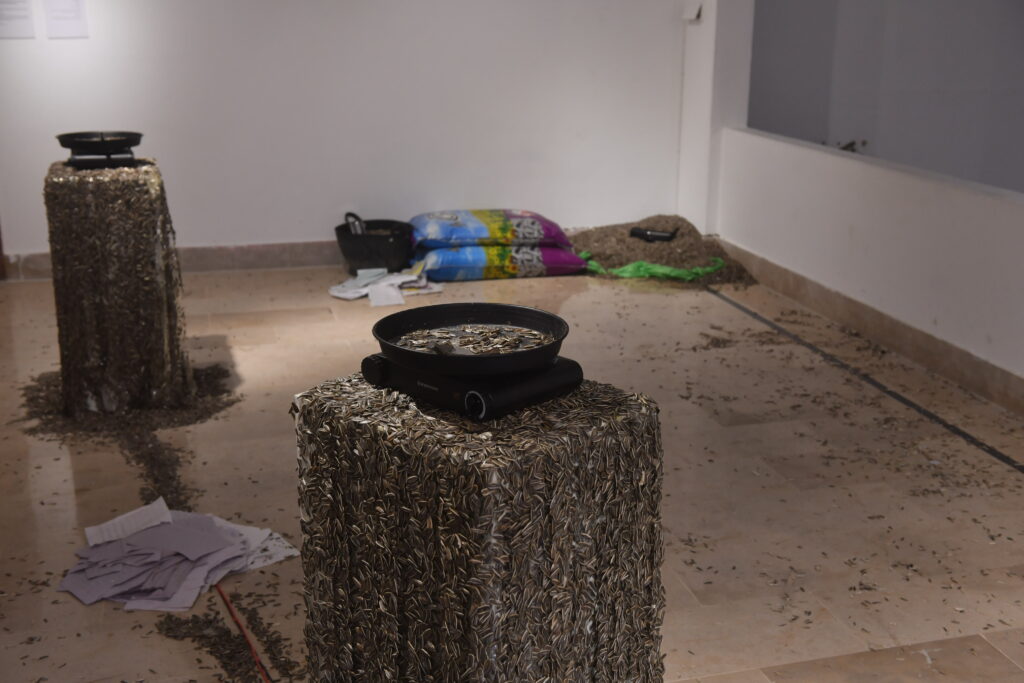
Salim Bayri and Ghita Skali’s installation at Sambara Art Gallery.
Bita Razavi (Finland/Iran) displayed “Bita’s Dowry” , a series of photographs and audio recordings depicting objects collected by her grandmother during the Iran-Iraq war. This project explored the themes of generational memory, marriage, and social expectations surrounding dowries. Her work resonated deeply in Karachi, touching on the universal experience of women as custodians of familial heritage.
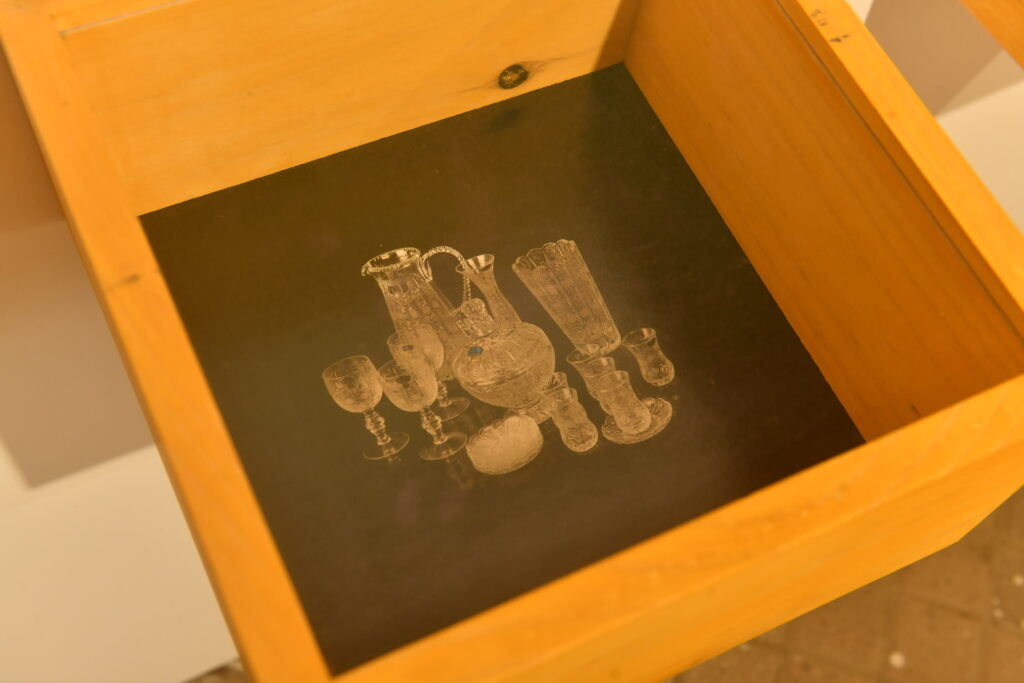
Bita Razavi’s artwork at Bagh ibn-e-Qasim.
Naiza Khan (United Kingdom/Pakistan) exhibited at Frere Hall, displaying paintings such as “The Streets are Rising” and “Kurrachee, Past, Present, and Future”. These pieces mapped Karachi’s complex landscapes, illustrating the impact of colonialism and climate on the city’s fragile infrastructure. Naiza’s works explore the intersection of land, borders, and environmental degradation, highlighting ongoing challenges in urban planning and pollution.
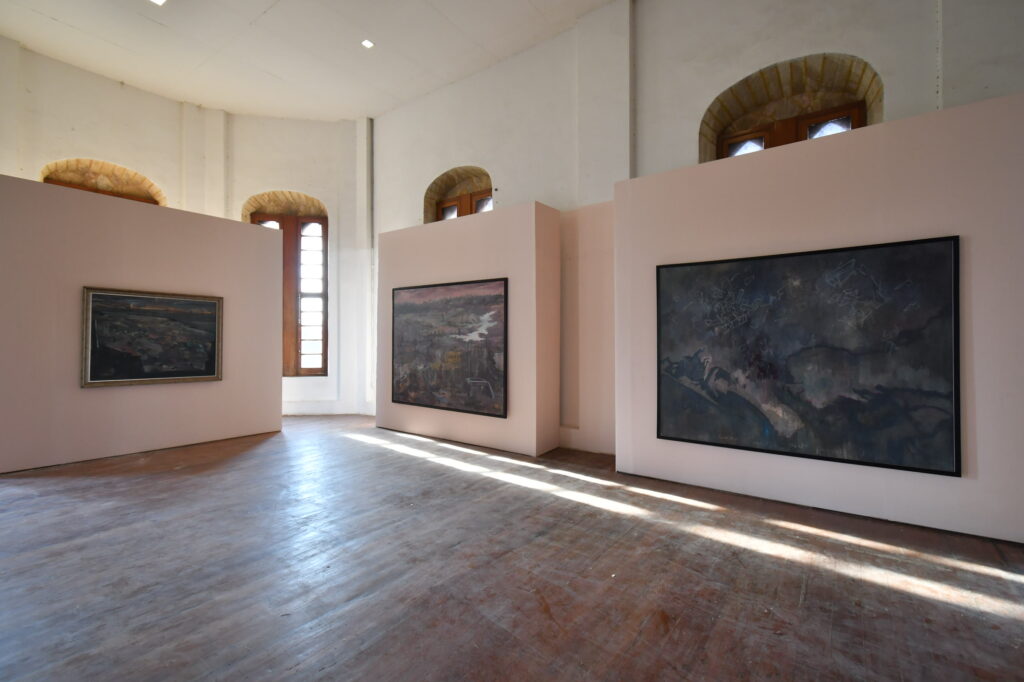
Naiza Khan’s paintings at Frere Hall.
Finally, Sepideh Rahaa (Finland/Iran) shared her video installation “Songs to Earth, Songs to Seed”, documenting the rice cultivation process in Mazandaran, Northern Iran. The 20-minute piece wove local songs sung by women during harvest, emphasizing intergenerational knowledge and the environmental challenges faced by Iranian farmers under economic sanctions.
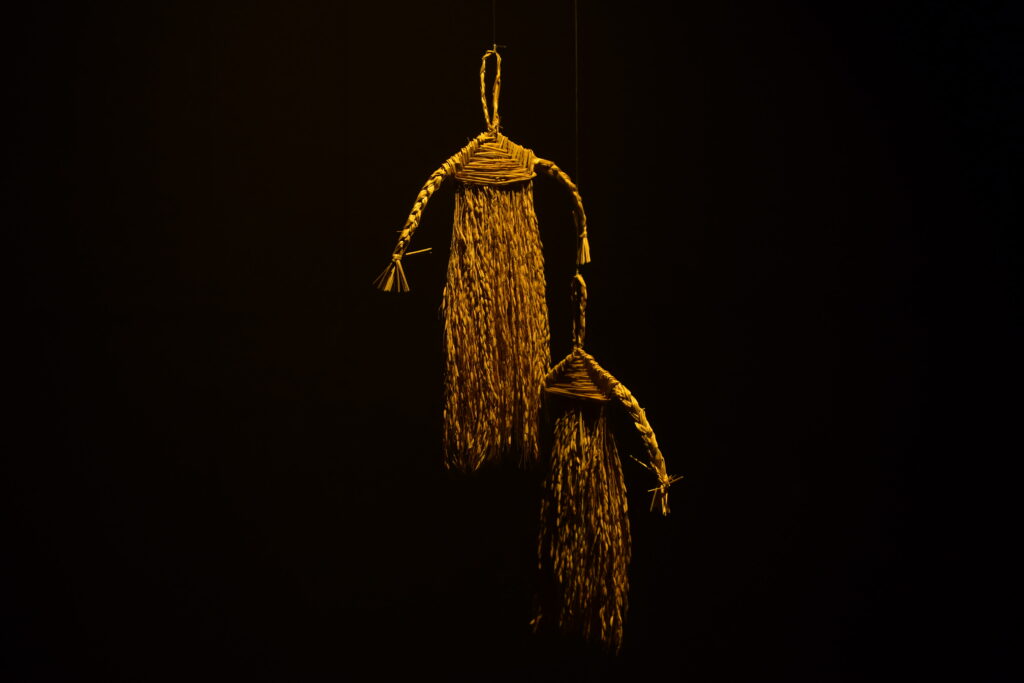
Sepideh Rahaa’s artwork and video at Alliance Française.
Each of these installations and performances at KB24 embodied the theme of Rizq/Risk, offering a rich perspective on pressing issues in food security, environmental justice, and cultural preservation. These artworks engaged viewers in thoughtful, hands-on ways, fostering an intimate connection with the Biennale’s themes.
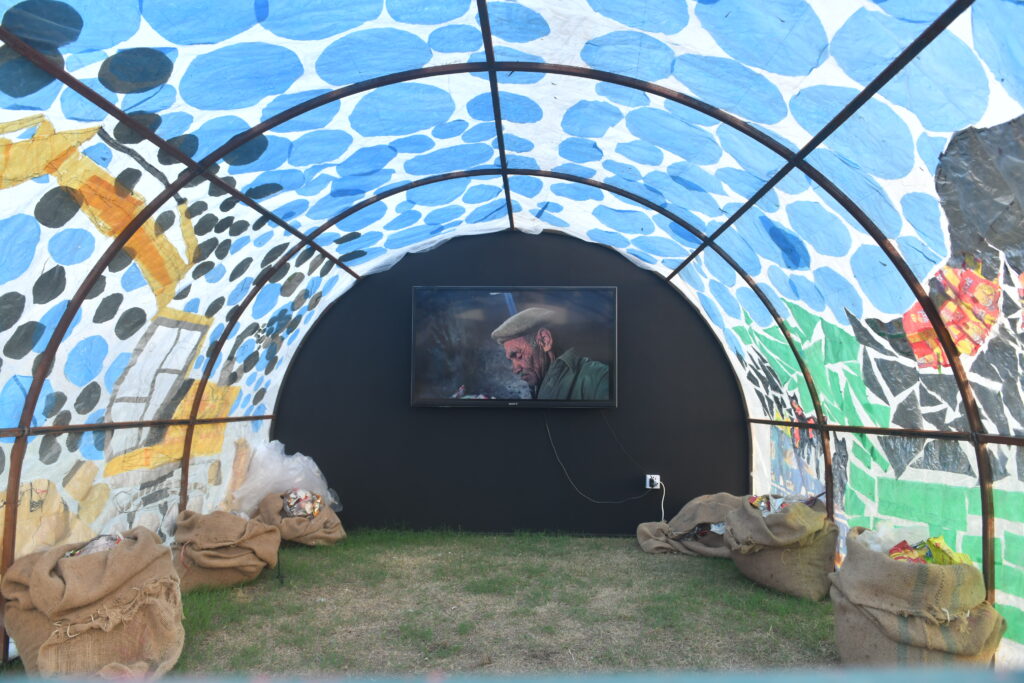
Nadeem Ali Karimi’s installation.
The Fourth Karachi Biennale closed with a vibrant ceremony at the historic City Council Hall in the Jamshed Nusserwanjee Building, spotlighting this landmark’s rich heritage. With prominent citizens, artists, and institutional heads in attendance, the closing event celebrated KB24’s public engagement and diverse artistic contributions.

Niilofur Farrukh, the Managing Trustee of the Karachi Biennale Trust, commended Karachi’s enthusiastic response, especially from youth, to the 40 participating artists from across Pakistan and around the world. She also advocated for establishing a Karachi Contemporary Art Museum in one of the city’s heritage sites to honor the city’s creative vibrancy and growing global art reputation.
Curator Waheeda Baloch shared insights on curating this edition, and awards were presented to outstanding contributors. Swedish artist duo Christer Lundahl and Martina Seitl won the KB24 Performance Art Prize for their immersive installation, “River Biographies”, while “Artists of Gaza Live in Our Heart”, a collaborative project by Textile Institute of Pakistan, won the collateral exhibition award.
Photo by Humayun Memon copyright Karachi Biennale Trust KB24
Photo copyright Karachi Biennale Trust KB24
